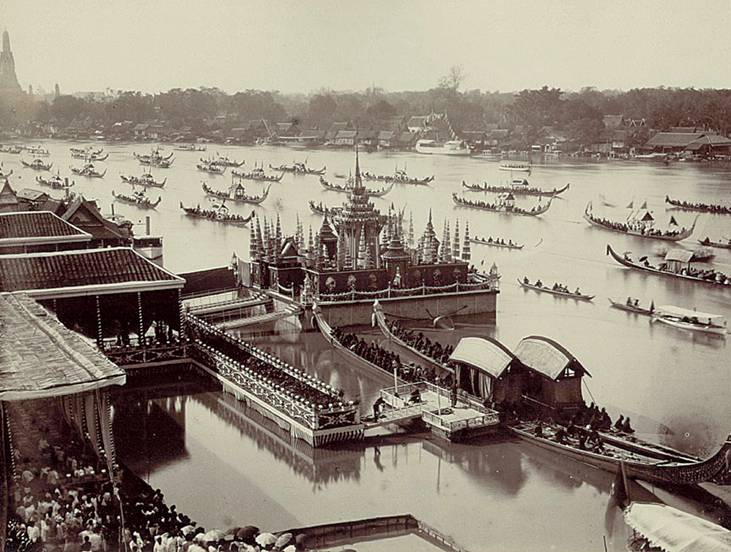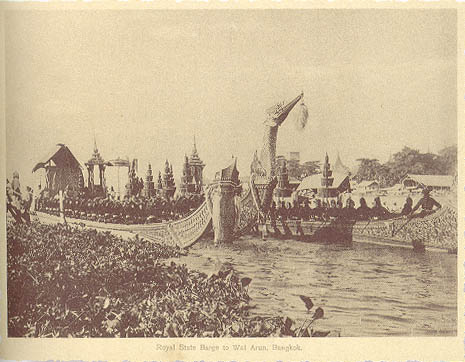
With historical evidence, it indicated that royal barge processions were held in the reign of King Narai the Great (King Ramathibodi III, kind of Ayutthaya, between 1632 - 1688 AD.) However, their existence went back much earlier to the Sukhothai Era (before 1350 AD.) King Ruang (Pokhun Ramkhamhaeng the Great, king of Sukhothai between 1239 - 1317 AD) used the royal barge during the festival of Loy Krathong, an event that takes place in the 12th month of the lunar year, to enjoy the fireworks in the middle of the river.
During Ayutthaya Era from 1350 to 1767 AD, the capital city, 'Ayutthaya', was bounded and crisscrossed by many watercourses. Jose Santen, a Dutch trader (Portugal was the first European nation that came to Ayutthaya in 1491 - 1529 AD) who came to trade in Ayutthaya had written and described the prosperity of Ayutthaya, "Ayutthaya is the capital city in which the king lives, and so do the nobles, officials, and all administrators. The city is situated on a small island in Chao Praya River. Its surrounding area is a flat field. The stone wall was constructed to surround the city with 2 Dutch miles circumference, therefore, it is a very big city. Its vicinity consists of many immediate Buddhist monasteries, and the population is dense in the capital.
Life in Ayutthaya revolved around numerous canals both at times of war and peace. In the period of Buddhist Lent, the time when monks receive 'kathin' robes, the king would perform the religious ceremonies, and would travel to the temple by royal barges. On such occasions, the royal barge procession played a major role in the community, and gave the populace a feeling of excitement and proud.
Royal barge processions also took place when the monarch made private visits, received foreign envoys, and presided over royal ceremonies and other important functions such as coronations and pilgrimages. The full-scale royal barge procession held in conjunction with the 150th anniversary of the founding of Bangkok was organized following strict, ancient tradition.
A full-scale royal barge procession encompasses 52 vessels with four designated as royal barges: the royal barge Suphannahongsa, the royal barge Anantanagaraj, the royal barge Anekchatbhuchonge and the royal barge Narai Song Suban H.M. Rama IX.
Anantanagaraj is the royal barge with seven-headed naga (great serpent) as figurehead. She has a vanished hull of green on the outside and red on the inside. She was constructed during the reign of King Rama III, and she was 42.95 meters long and 2.95 meters at the beam.
The only royal barge that was built during the current reign of King Rama IX was Narai Song Suban H.M. Rama IX. She was constructed to celebrate the 50th anniversary of His Majesty's accession to the throne. The figurehead is 'Narayana', the Hindu god, riding a garuda. She is red inside the hull, and 44.3 meters long and 3.2 meters at the beam.

